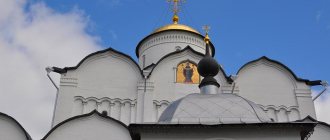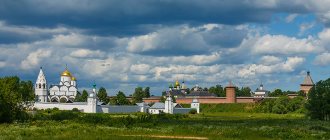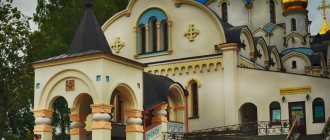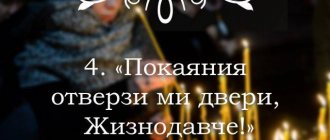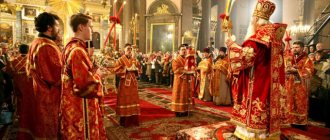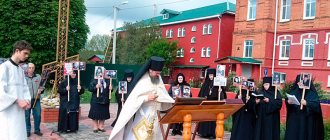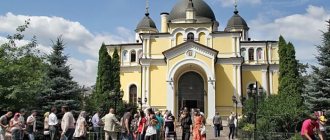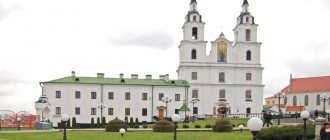Even those who have visited this city more than once cannot say how many churches there are in Suzdal. In the historical area, temples, bell towers and monastery buildings can be found literally at every turn. According to some sources, the first church appeared here in 999. Active construction took place in the 16th century. The answer to the question of how many churches and monasteries there are in Suzdal is contained in this article.
City `s history
Suzdal was first mentioned in the chronicle of 1024. A quarter of a century before the construction of fortifications began, a wooden church was erected on the territory of the future city. It is unknown how many churches there were in Suzdal at the beginning of the 12th century. But it was at this time that the city was besieged by the Bulgars. Local residents were able to protect him. A little later, Suzdal became the center of the Rostov-Suzdal principality.
In 1637, the city was raided by the Tatars. Seven years later there was a fire that destroyed part of the buildings. It is difficult to say how many churches remained in Suzdal by the end of the 17th century. Temples founded in the Middle Ages have been preserved, but they, as a rule, have been restored more than once. The wooden ones, built during the time of Ivan the Terrible, did not survive.
It is known that in the 16th century the city became one of the religious centers of the Russian state. There were eleven monasteries here then. How many churches were built in Suzdal in the 16th century? There are probably at least eleven monastic ones alone.
How many churches, monasteries and temples were destroyed in Suzdal during Soviet times? There is a precise answer to this question. In the twenties, 15 temples were destroyed.
After the collapse of the USSR, the white stone monuments of Suzdal were included in the UNESCO World Heritage List. In 2004, the settlement received the status of an urban settlement.
Suzdal is part of the Golden Ring. This is one of the most interesting cities in the Vladimir region. The filming of such films as “The Marriage of Balzaminov”, “Andrei Rublev”, “The Youth of Peter”, “The Brothers Karamazov”, “Tsar” took place here.
Architecture and decoration of the building
The appearance of the shrine differs from traditional white stone structures.
Appearance
The building was made in the Naryshkin Baroque style, which is atypical for Suzdal. It is characterized by modesty, elegance, and elements of European Baroque and Gothic. White platbands and pilasters stand out against the background of the red walls of the cathedral.
Interior design
Many visitors note the warm, even magical atmosphere inside the temple. It contains a five-tiered iconostasis; the paintings were done in our time in a modern manner. During your free time from church services, you can listen to audio recordings of church hymns.
Shrines of the temple: the relics of St. Arsenios of Elasson
On February 22, 2015, the relics of St. Arseny of Elasson were transferred from the Church of the Nativity of the Virgin to the Assumption. Arseny Elassonsky, who headed the Suzdal diocese during the Time of Troubles, blessed the people's militia to fight the Poles. Despite his Greek origin, Arseny of Elasson is a revered saint in Russia. Now anyone can venerate the holy relics. It is believed that the relics help sick children recover.
Suzdal Kremlin
Nikolskaya, Uspenskaya, and the Nativity of Christ are churches located on the territory of the main architectural ensemble of the city. The first one was built in the 18th century. The exact date of foundation of St. Nicholas Church is not known. This is one of the first churches built after the fire that occurred in 1719. The church was built of white stone and consists of a main part, a bell tower and a refectory.
The Assumption Church was built in the 17th century. After the fire it was restored. Before the revolution, the church had a hipped bell tower. A major restoration was carried out in the late 50s. The main part of the building is designed in the Naryshkin style.
The Church of the Nativity of Christ was built in 1775. Located in the south-eastern part of the Kremlin. In the 19th century, a porch was added to it. The temple resembles a residential building.
Museum of Wooden Architecture in Suzdal
The Museum of Wooden Architecture and Peasant Life is a complex of architectural monuments in the open air. The museum's exposition reproduces a small village with huts, churches, outbuildings and windmills of the 17th–19th centuries, which were brought here from different parts of the Vladimir region.
Two temples, built without a single nail, rise above the recreated village. Here you can see the hut of a simple farm laborer, a wealthy peasant and a merchant. The interiors of the huts contain samovars and furniture, dishes and toys, wooden spinning wheels and looms.
Pokrovsky Monastery
The current appearance of this architectural ensemble took shape in the 16th century. But the monastery was founded in the middle of the 14th. In 1923, the monastery was closed and destroyed. For some time, the so-called sharashka was located here - a biological laboratory in which scientist-prisoners worked. The main temple is the Intercession Cathedral. There are no other churches on the territory of the monastery.
Cathedral bell tower
To the south of the Nativity Cathedral is its bell tower, which corresponds in size to the temple itself. It was erected by order of Bishop Serapion in the 12th century. The bell tower of the Nativity Cathedral in Suzdal has a large figure of eight with massive wide arches of the belfry. It is crowned with a hipped dome with three rows of dormers of various shapes.
Under the hipped dome, a roof was created (a roofing element above the cornice), which was a distinctive architectural element of similar buildings of the 17th century. At the end of the 17th century, a striking clock was installed on the bell tower of the Nativity Cathedral in Suzdal, which rang every hour, as well as every quarter of an hour. They have survived to this day and continue to operate after repairs and restoration.
On the second tier, two thrones were created. At the end of the 17th century, Metropolitan Hilarion ordered the expansion of the cathedral. An altar part was added, which was connected to the gallery and bishop's chambers. On the northern side the building was surrounded by a bypass gallery, and on the eastern side a porch (porch) was erected, which was crowned with an octagonal tent. At the beginning of the 18th century there was a big fire, due to which the passages and the gallery itself were completely destroyed. Only 250 years later, in the 70s of the 20th century, they were restored.
Other temples
On the right bank of the Kamenka River, in that part of the city called the Zarechnaya Side, there are nine churches. Most of them were founded in the 18th century. Two churches - in the 16th century.
The monuments of the Skuchilikha settlement include the temples of the Smolensk Icon of the Mother of God and Simeon the Stylite. Five more buildings are located in Posad.
So, how many churches are there in Suzdal? The number of churches located near monasteries is 12. Outside the monasteries is 23. That is, in total there are 35 churches and 5 monasteries in Suzdal. In addition, more than ten Orthodox churches are located in the vicinity of the city.
Church restoration
During the restoration of the temple in 1938, on the walls of one of the apses, the craftsmen discovered ornaments that dated back to the time of Vladimir Monomakh. The oldest frescoes from the early 13th century were also found.
The necropolis of the Nativity Cathedral in Suzdal is also of historical interest. As scientists have found out, representatives of famous princely and boyar families, for example, the Belskys, Shuisky-Skopins and Shuiskys, are buried under the cast iron slabs installed in the floor of the temple. Also here are the ashes of Yuri Dolgorukov’s sons – Svyatoslav and Ivan.
Golden Gate
The Golden Gate is a unique work of ancient Russian masters, created in the 20-30s of the 18th century.
The gate consists of two leaves, each of which has seven rows of massive plates, installed in two rows and covered on the outside with copper sheets. The plates are joined together using metal rollers. All details of the gate are covered with gilded patterns with ornaments, images of fantastic animals and birds, scenes on biblical and evangelical themes.
The technique for making golden gates was called fire gilding. A design was made on a black copper base using wire, which was filled with gold dissolved in mercury. After heating the plates, the mercury evaporated, and the gold merged with copper forever.
The door handles are made in the form of lion heads holding heavy bronze rings in their mouths.
The Nativity Cathedral suffered significant damage during the Mongol-Tatar invasion in 1238. It is believed that it was then that the northern Golden Gates were removed, while the southern and western ones were badly damaged and were restored at the end of the 13th century.
One of the attractions of the Suzdal Nativity Cathedral is the Tsar Lantern of the 17th century. Its weight is 160 kilograms and it was used during religious processions.
Construction of the Cathedral of the Nativity of the Virgin Mary in Suzdal
In the middle of the 12th century (1148), on the site of the former cathedral, a new huge temple was erected from hewn white stone - porous limestone, similar in its architecture to the Assumption Church in the Kiev Pechersk Lavra. It is placed on a powerful foundation dug into a deep pit. The massive six-pillar quadrangle of the temple was crowned by three helmet-shaped domes on high drums. The central chapter was probably placed on an additional pedestal, and the small chapters rested on the eastern corners of the building.
The first documentary mention of the cathedral dates back to the Laurentian Chronicle in 1222, when on the basis of the previous cathedral, at the behest of the Vladimir prince Yuri Vsevolodovich, a third building was erected, surrounded by three vestibules, which also served as buttresses reinforcing the walls. The cathedral was built on top and decorated with relief drawings, women's masks, carvings, and surrounded by an arcature with columns. Construction lasted from 1222 to 1225, when Bishop Simeon re-consecrated the cathedral and renamed it from the Assumption to the Mother of God of the Nativity. In 1233 The interior of the cathedral was re-painted with frescoes, and the floors were laid with terracotta tiles.
In 1445 During the raid of the Kazan Khan, the cathedral burned and its vaults collapsed. It took a long time to wait for restoration: only in 1530. By order of Tsar Vasily III, it was dismantled down to the arched-columnar belt and rebuilt. Instead of three chapters, they now made five, with tall brick light drums with narrow slits-windows. In this form, with some reconstructions of the 17th-18th centuries, the cathedral has survived to this day.
In 1634 By order of Bishop Serapion, the cathedral was painted again, and under him in 1635-1636. The chapel of Saints Theodore and John is being built. Under Metropolitan Hilarion, they dismantled the huge choirs, which housed 5 thrones: the Archangel Gabriel, the Beheading of John the Baptist, the Great Martyr Demetrius, the Ascension of the Lord and three saints (Basily the Great, Gregory the Theologian and John Chrysostom).
The inside of the cathedral is no less majestic than the outside. One of its main attractions is the Golden Gate - a unique example of decorative and applied art by Suzdal masters. During the restoration of the cathedral in 1938. under the leadership of A.D. Varganov and I.A. Stoletov, ornaments from the time of Monomakh and unique ancient frescoes from 1233 were discovered on the walls of the southern apse.
The necropolis of the Nativity Cathedral is of particular interest. Among those buried under the cast-iron floor slabs there are members of the most famous boyar and princely families, such as the Shuiskys, Shuisky-Skopins, and Belskys. The sons of Yuri Dolgoruky, Ivan and Svyatoslav, are also buried there.
In the 1930s services in the cathedral ceased, and scientific and archaeological research began. By the 1960s later buildings were demolished and the building regained its 16th-century appearance, with the exception of the onion-shaped domes with stars.
In August 2005 The cathedral, which had been under restoration for a long time, reopened. During the restoration, the relics of St. Arseny of Elasson (1550-1635), Archbishop of Suzdal and Tarusa, canonized in 1982, were found in it, which were left in the cathedral. The last stage of the restoration was the restoration of the frescoes and white stone.
